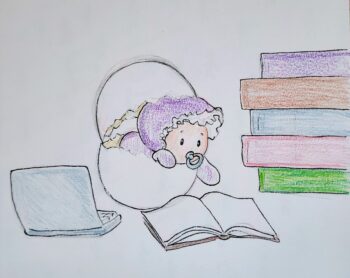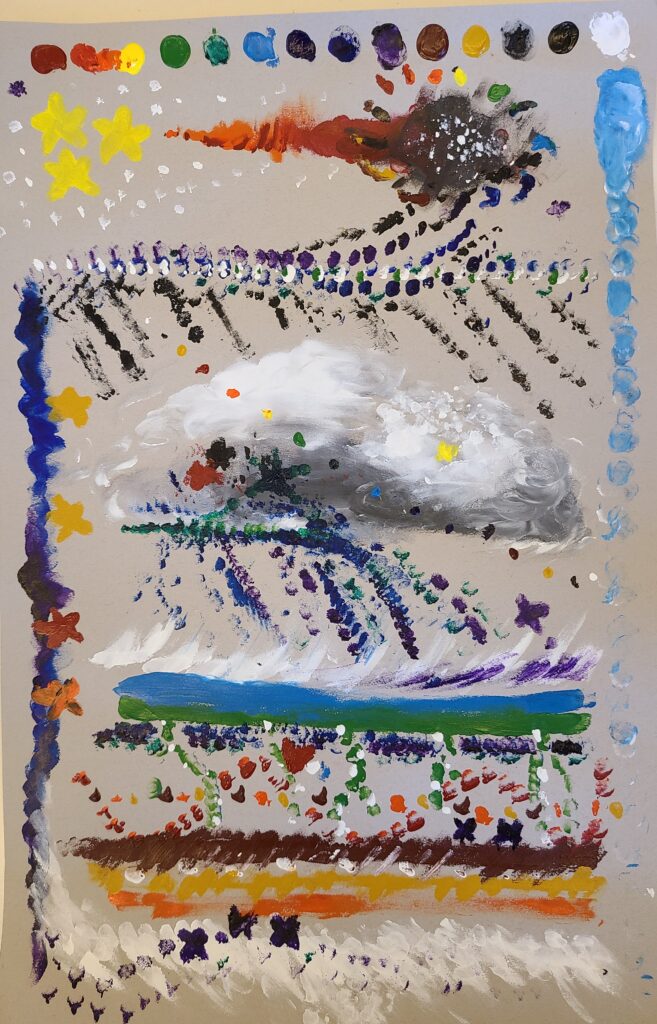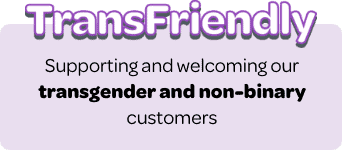
Authored by Ray White, MA, QMHP, a member of the IntraSpectrum Counseling clinical team.
Describing Art Therapy
One of the questions that I get the most as someone who has studied Art Therapy, is: “What is Art Therapy?” I have difficulty answering this question as there is so much diversity within Art Therapy. People are unique and therapy sessions and treatment goals are meant to meet an individual’s specific needs and goals. As therapy can look an infinite number of ways, so too can Art Therapy. My goal for this blog post is to provide an intro to Art Therapy and discuss some of the opportunities that Art Therapy provides for LGBTQ+ people seeking therapy.
One Definition of Art Therapy
Art Therapy is the process of using art-making and creativity to facilitate healing, growth, and self-expression. Art Therapists integrate psychological theory with expressive arts to meet the specific needs and goals of the population they are working with. They work with individuals, families, and communities. Art Therapy serves many purposes: it can foster self-worth, identity, and help us find meaning. It can reflect our perceptions of ourselves and the world around us. Art therapy can be integrated with social justice work and activism. It can soothe and calm. It can increase neuroplasticity, lower cortisol levels, and improve sensory-motor functions. It is a way to communicate, verbally or nonverbally, with ourselves and with others.
I think this is a good place to start. In addition, I’ll elaborate on Art Therapy’s role within LGBTQIA+ focused therapy using examples of interventions and artwork. If you’re looking for more information on Art Therapy this Tedx talk is a wonderful resource that describes Art Therapy, its therapeutic use in tandem with treatment goals, and provides examples of art interventions.
Art Therapy and Identity
Art Therapy provides a unique way to explore Identity, our individual and internal sense of who we are. Defining our sense of self is not an inherently easy task and it is especially difficult for those who have experienced trauma, been in unhealthy relationships, or who have mental health concerns. Identity narratives historically have excluded LGBTQ+ perspectives and ways of being. Identity exploration can be strained by masking, micro / macroaggressions, disenfranchisement, or being closeted (to name a few examples of how living under normative systems affects mental health).
Art Therapy can provide a way for individuals to explore who they are at their own pace and with their own language. Language within Art Therapy can be verbal, written, non-verbal, abstract, metaphorical, you name it. It is a space free of judgment, shame, and censorship. Interventions could include portrait-making utilizing a variety of media and styles (see example below: “Portrait of a Baby Trans”).
Often when I ask folks to describe an aspect of their identity, people use rich, thoughtful descriptions. A lot of folks love using memes. Sometimes this leads me to bring in collage materials or the fiber arts. It is important to consider materials available in therapy to provide creative opportunities as well as options in case some materials are triggering or unpleasant for an individual. I also want to note that dysphoric feelings may arise when using one’s body to create art or when representing one’s self in art, and Art Therapy can help navigate these feelings when good communication is being utilized along with grounding and coping skills.
 Expression through Art
Expression through Art
Expression is often mentioned in the same conversation as identity. While there can be similarities it can help to think of identity as one’s internal sense of self and expression as outward communication of self. Art Therapy can aid in this conversation by acting as an external outlet for thoughts and feelings. It’s an avenue for exploring that weird thing where other people perceive our existence and all of the everything that comes along with that. With art we can explore what it might mean to be feminine, masculine, both, neither. We can redefine these concepts and break down barriers, norms, and expectations.
Expression in Art Therapy is affirming and validating of the unique roles that LGBTQ+ people enact within family constellations, friend groups, and in their community. Art therapy can provide a unique space to explore diverse issues including but not limited to grief, trauma, depression, anxiety, and stress. Art acts as a way to navigate issues, identity thoughts, affirm feelings, and feel empowered to take action and work towards goals. Below is an abstract painting that communicates a timeline of one person’s narrative of mental health in relation to career and finding meaning. A couple of other interventions I have used in my work include: making a Pride flag of yourself, and creating masks contrasting how we see ourselves versus how we think others see us.
 Community-Building
Community-Building
Exploring identity and expressing our thoughts and feelings naturally leads to connection. A powerful example of the profound effect of art and community is the AIDS Memorial Quilt, a 54-ton tapestry that expresses grief at the loss of loved ones to AIDS. It has grown to include over 50,000 panels, bringing together those who want to remember the lives lost and demand healthcare equity and social justice. Art has political power and unites activists in challenging anti-LGBTQIA+ policies and mandates. It can bring attention to LGBTQ+ individuals targeted by those in positions of power.
Art can also symbolize safety, community, and trust. If you are walking into or out of the IntraSpectrum offices in Andersonville you can see murals in the community, signaling that you are seen without having to ask or demand to be seen. Art Group Therapy can be especially powerful as a way to connect and empathize. Group members engage in collaboration, vulnerability, and self-expression often by switching art pieces, adding onto another’s artwork, or by collectively working on one piece of group art.
Further Discussion
This has been a brief introduction into what Art Therapy is, with a focus on some of the opportunities it presents in LGBTQ+ conscious treatment. There is certainly more to talk about, some examples include:
This has been a brief introduction into what Art Therapy is, with a focus on some of the opportunities it presents in LGBTQ+ conscious treatment. There is certainly more to talk about, some examples include:
- Art Therapy and neuroscience – the science behind art therapy might seem intimidating to jump into, but it can be helpful for diverse populations including trauma survivors, neurodivergent folks, and people with dementia. Click to see how one group, the American Congress of Rehabilitation Medicine talks about art therapy and neuroscience:
- Art Therapy and theory – Art Therapy can be integrated into psychological theories such as Psychoanalysis, Analytical Psychology, Gestalt Therapy, Person-Centered Therapy, Narrative Therapy, Feminist theory, and more as a way to serve each of these theories’ tenets and framework.
- Expressive Therapies Continuum – a model of creative functioning that acts as a framework for four levels of information processing: the Kinesthetic / Sensory Level, the Perceptual/Affective Level, the Cognitive / Symbolic Level, and the Creative Level. Levels activate both the left and right hemispheres of the brain and art-making methods and materials can be used to help someone process information in differing ways.
___________________________________________________
This blog is authored by Ray White, MA, QMHP, a member of the IntraSpectrum Counseling clinical team. IntraSpectrum Counseling is Chicago’s leading psychotherapy practice dedicated to the LGBTQ+ community, and we strive to provide the highest quality mental health care for multicultural, kink, polyamorous, and intersectional issues. For anyone needing affirming and validating support, please click here or contact us at help@intraspectrum-chicago.com.
(Photo credits: Ray White)





 Today, July 26th, is National Disability Independence Day. This annual commemoration marks the day in 1990 when the Americans with Disabilities Act (ADA) was signed into law. The ADA enshrined several crucial civil rights protections for individuals with disabilities, but it still falls short of its intended goals after over 30 years on the books.
Today, July 26th, is National Disability Independence Day. This annual commemoration marks the day in 1990 when the Americans with Disabilities Act (ADA) was signed into law. The ADA enshrined several crucial civil rights protections for individuals with disabilities, but it still falls short of its intended goals after over 30 years on the books.